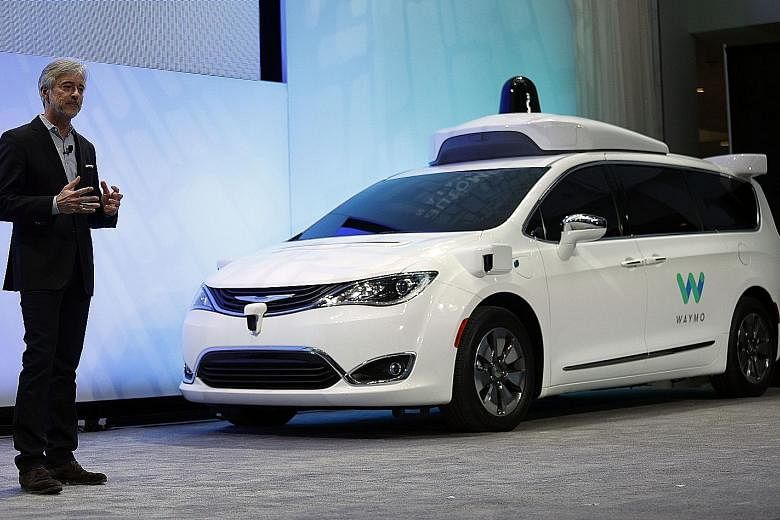After almost a decade of research, Google's autonomous car project is close to becoming a real service.
Now known as Waymo, the Alphabet Inc self-driving car unit is letting residents of Phoenix, Arizona, sign up to use its vehicles, a major step towards commercialising a technology that could one day upend transportation.
For the service, Waymo is adding 500 customised Chrysler Pacifica minivans to its fleet.
It has already tested these vehicles, plus other makes and models, on public roads, but only with its employees and contractors as testers.
By opening the doors to the general public with a larger fleet, the company will get data on how people experience and use self-driving cars - and clues on ways to generate revenue from the technology.
"We're at the point when it's really important to find how real people, outside the Google environment, will use this technology," said Mr John Krafcik, Waymo's chief executive officer. "Our goal is that they will use this for all their transportation needs."
Waymo is letting people across parts of the Phoenix metropolitan area apply for the service as part of an "early rider programme". Initial users will be able to book Waymo's minivans using an app, without paying.
Dollars will flow eventually, Mr Krafcik said. The company is signing up hundreds of people with diverse backgrounds and transportation needs.
Google is a pioneer in autonomous cars, launching its research programme in 2009.
After mostly ignoring the project for several years, the auto industry has rushed to catch up, pumping billions of dollars into similar technology and engineering talent.
A bevy of newcomers has joined too, including some founded by former Waymo engineers, making the field incredibly competitive before anyone has made money.
Uber Technologies Inc has emerged as a particularly bitter rival. Last year, autonomous vehicles run by the ride-hailing giant began picking up paying customers in Pittsburgh. Earlier this year, it started doing the same in Tempe, a town in the eastern part of the Phoenix metro area.
Waymo is currently suing Uber over the technology.
Yet Waymo insists its business model will be broader than Uber's.
"Yes, self-driving technology makes sense for ride-sharing," said Mr Krafcik, a former executive at Hyundai Motor Co's United States operations and Ford Motor Co. "It also makes sense for personal car ownership."
Transportation to and from transit hubs and logistics also made his list. In Phoenix, Mr Krafcik said participants will use the autonomous minivan fleet every day, at any time, to go anywhere within an area twice the size of San Francisco.
Last year, Waymo inked a deal with Fiat Chrysler Automobiles NV for 100 Pacifica vans outfitted with Waymo's software and tailored hardware. Waymo added the fleet to 70 other cars it is testing in California, Texas, Washington and Arizona, which it entered last year.
Since Google started its programme, those vehicles have racked up nearly 4.8 million test kilometres on public roads, primarily to refine the autonomous software and ensure the system could handle rare but potentially dangerous edge cases.
Waymo has faced criticism for not launching a commercial service sooner. Mr Krafcik has often responded by pointing to safety concerns and technical obstacles to deploying fully driverless cars.
The Phoenix service answers some of these concerns. It is a move beyond the research phase that focuses on passenger experience and business model development.
Waymo's staff has worked on new displays and controls to get people comfortable being inside self-driving cars. The Phoenix passengers will be the first to see these tools in action.
Waymo is still moving cautiously. Chosen users for the Phoenix service will sit in passenger seats and Waymo will put contractor or employee testers in the driver seat, although Mr Krafcik said the goal is to remove them eventually.
The company has quietly been testing the service with a handful of Phoenix residents for two months.
From those trials, he noted one behaviour trait when no one has to drive. "People have a better opportunity to bond and connect inside the vehicle," he said.
BLOOMBERG

